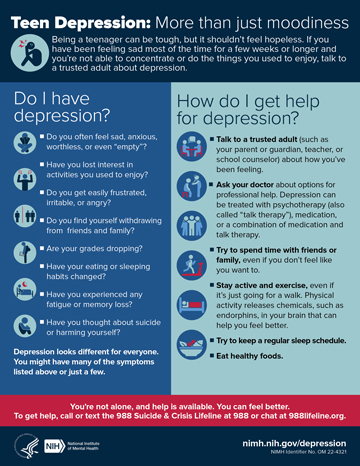 Resilience is the quality that allows you to “bounce back,” adapt, and persevere when you are faced with problems or challenges. Becoming more emotionally resilient will help you manage hard times and stress.
Resilience is the quality that allows you to “bounce back,” adapt, and persevere when you are faced with problems or challenges. Becoming more emotionally resilient will help you manage hard times and stress.
The following 10-point plan was developed to help you manage stress. None are quick fixes, but they will lead you toward a healthy and successful life.
The plan is divided into 4 parts:
- Tackling the problem
- Taking care of my body
- Dealing with emotions
- Making the world better
This plan is supposed to help you reduce stress, not give you more. Try out some ideas; then stick to one or two for each point.
You might notice that this plan is almost like building a college or work résumé. This is the sane way to build a résumé; you are doing it to manage your life and remain happy and prepared for success, not to cram in activities to impress someone else. It will ensure you’re healthy and balanced, and that’s very attractive to colleges and employers.
Part 1: Tackling the Problem
Point 1: Identify and Then Address the Problem.
First decide if a problem is a real tiger or just feels like one. If it can’t hurt you, chances are that it can be better handled with clear thinking. This means turning off those thoughts that make you interpret the situation as a disaster.
- A lot of people cope by ignoring problems. This doesn’t make them go away; usually they just get worse.
- People who cope by trying to fix problems tend to be emotionally healthier.
- When it comes to studying or chores, it is best to get the work done first. Because work or studying produces stress, many people put it off and choose to do fun things first. The problem with that is they’re not really having fun because they’re worrying about the work they’re ignoring. And of course, the longer they put it off, the more they worry. The cycle is endless.
- Fights with parents and friends don’t go away unless you deal with what upset you in the first place, or unless everyone apologizes and decides to forgive each other.
Three ideas can help you manage a lot of work.
- Break the work into small pieces. Then do one small piece at a time, rather than look at the whole huge mess. As you finish each piece, the work becomes less overwhelming.
- Make lists of what you need to do. This will help you sleep because your head won’t spin with worry about whether you can do everything. At the end of the day, you’ll have less to worry about as you check off the things you have finished. You will look at the same huge amount of work and realize you can handle it.
- Timelines can help with big projects.
Point 2: Avoid Stress When Possible.
Sometimes we know exactly when we are headed for trouble. Avoiding trouble from a distance is easier than dealing with it up close. You know the people who might be a bad influence on you, the places where you’re likely to get in trouble, and the things that upset you. Choose not to be around those people, places, and things that mess you up.
Point 3: Let Some Things Go.
It’s important to try to fix problems, but sometimes there is nothing you can do to change a problem. For example, you can’t change the weather, so don’t waste your energy worrying about it. You can’t change the fact that teachers give tests, so just study instead of complaining about how unfair they are. You can’t change the fact that your parents need to know where you go, so prove that you’re responsible and deserve more freedoms. People who waste their energy worrying about things they can’t change don’t have enough energy left over to fix the things they can. Also learn when not to take things personally. You feel badly for no reason when you take something personally that really has little to do with you.
Part 2: Taking Care of My Body
Point 4: The Power of Exercise.
Exercise is the most important part of a plan to manage stress. When you are stressed, your body is saying, “Run!” So do it. Exercise every day to control stress and build a strong, healthy body. You may think you don’t have time to exercise when you are most stressed, but that is exactly when you need it the most. If you are stressed about an assignment but too nervous to sit down and study—exercise! You will be able to think better after you have used up those stress hormones. Some people exercise before school so they can focus and learn better.
Point 5: Active Relaxation.
You can flip the switch from being stressed to relaxed if you know how to fool your body. Because your body can only use the relaxed or emergency nervous system at any one time, you can turn on the relaxed system. You do this by doing the opposite of what your body does when it is stressed. Here are 2 ideas.
- Breathe deeply and slowly. Try the 4–8 breathing technique. Lie on your back and place your hands on your belly with your fingers loose. Deep breaths first fill the belly, then the chest, then the mouth; the breath expands the belly and your hands pull gently apart. Take a full breath while counting to 4. Then hold that breath for about twice as long, or an 8 count. Slowly let it out to the count of 8, or even longer if you can. This will relax your body after a few breaths, but just as importantly, it requires your full concentration. Your mind is too focused on breathing to focus on worries. Do this 10 times and you will feel much more relaxed. Yoga, martial arts, and meditation also teach great breathing skills. When you get good at this, you can even do this in a chair during a test and nobody will know.
- Put your body in a relaxed position.
- Your body knows when you’re nervous. If you sit down to take a test and your legs are shaking, you are saying, “I want to run!” Remember, you can’t concentrate and run at the same time, so you are making it harder to take the test. Instead, take those deep breaths, lean back, and tell your body there is no emergency.
- When you’re angry, the natural thing to do is stand up and face someone shoulder-to-shoulder and chest-to-chest. You do this without even thinking, but this subconsciously tells the other person that you’re angry and ready to fight. It also may prevent you from thinking clearly. Do the opposite of what you would do if you were really going to fight—sit down, take deep slow breaths, and tell your body there is no danger. Then use your brain to get out of the situation.
Point 6: Eat Well.
Everyone knows good nutrition makes you healthier. Only some people realize that it also keeps you alert through the day and your mood steady. People who eat mostly junk food have highs and lows in their energy level, which harms their ability to reduce stress. Instead of eating greasy or sugary foods, eat more fruits, vegetables, and whole grains—they keep you focused for a longer time. Go to ChooseMyPlate.gov to learn more.
Point 7: Sleep Well.
Most kids don’t get the sleep they need to grow and think clearly. Tired people can’t learn as well and can be impatient and irritable. Here are some ideas to improve your sleep.
- Go to sleep about the same time every night.
- Exercise 4 to 6 hours before bedtime. Your body falls asleep most easily when it has cooled down. If you exercise right before bed, you will be overheated and won’t sleep well. A hot shower 1 hour before bedtime also helps your body relax to fall asleep.
- Use your bed only to sleep. Don’t solve your problems in bed. When you think about all the things that bother you, you have trouble falling asleep and wake up in the middle of the night to worry more. Instead, have another spot to think, like a worry chair. Give yourself plenty of time to think things through, make a list if you need to, and then set it aside! Go to bed to sleep.
- Don’t do homework, watch television, read, or use the phone while in bed.
Part 3: Dealing With Emotions
Point 8: Take Instant Vacations.
Sometimes the best way to de-stress is to take your mind away to a more relaxing place.
- Visualize. Have a favorite place where you can imagine yourself relaxing. The place should be beautiful and calm. When you’re stressed, sit down, lean back, take deep breaths, close your eyes, and imagine yourself in your calm place.
- Take time out for yourself. Everyone deserves time for themselves—a bath or something that allows time to think and de-stress. Try a warm bath with your ears just underwater. Listen to yourself take deep, slow breaths. Take your pulse and count as your heart rate goes down.
- Enjoy hobbies or creative art as an instant vacation.
- Look at the beauty around you and get pleasure from the small things you may have stopped noticing.
- Take mini-vacations. Sometimes we forget that the park around the corner is a great place to hang out. A walk outside can be a mini-vacation if you choose to forget your worries.
- Reading a good book is an escape from reality. You have to imagine the sights, sounds, and smells—you are somewhere else for a while.
Point 9: Release Emotional Tension.
Sometimes feelings become so overwhelming that we cram them all away in an imaginary box and think we’ll deal with them later. But later, there’s so much stuff in the box that there is too much to deal with. This can make your head feel as if it is spinning. Sometimes you get angry or frustrated without even knowing why. You just know there is too much stuff going on in your head. It’s good to pick just one problem to work on and forget the rest for the moment. When we decide to deal with only one problem at a time, it’s much less scary to open the box.
Here are some ideas to release your thoughts or worries one at a time.
- Creativity. People who have a way to express themselves don’t need to hold it inside. Creative outlets like art, music, poetry, singing, dance, and rap are powerful ways to let your feelings out.
- Talking. Every young person deserves a responsible adult to talk to and some friends to trust. Hopefully, you can talk to your parents. If you do not want to tell your parents everything, make sure to find an adult who’ll listen and whom you can ask for advice.
- Journaling. Write it out!
- Prayer. Many young people find prayer or meditation helpful.
- Laughing or crying. Give yourself permission to feel your emotions fully.
Part 4: Making the World Better
Point 10: Contribute to the World.
Young people who work to make the world better have a sense of purpose, feel good about themselves, and handle their own problems better. It’s important to understand that you really can make a difference in other people’s lives. The role of teenagers is to recognize the mistakes adults have made and build a better world.
My Personal Stress Plan
Now that you have read about the kind of things a person can do to reduce stress, you may be ready to create a plan for yourself. Download the template called My Personal Stress Plan (PDF)
Just check off the ideas you think would work best for you. There are spaces for you to write down your own ideas too.
Excerpted from: Building Resilience in Children and Teens: Giving Kids Roots and Wings, 3rd Edition (Copyright © 2015 Kenneth R. Ginsburg, MD, MS Ed, FAAP, and Martha M. Jablow) Used with permission.
Source: American Academy of Pediatrics |For Teens: Creating Your Personal Stress-Management Plan, https://www.healthychildren.org/English/healthy-living/emotional-wellness/Building-Resilience/Pages/For-Teens-Creating-Your-Personal-Stress-Management-Plan.aspx | ©Copyright 2018 American Academy of Pediatrics
Do you need someone to talk to? CHC can help. We invite you to call or email our Care Coordinators at 650.688.3625 or careteam@testing.chconline.org to set up a free 30-minute consultation.





